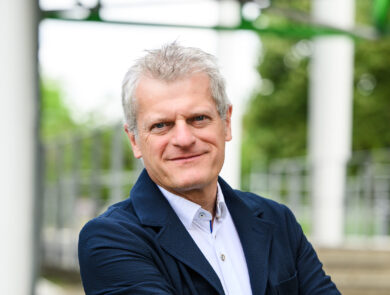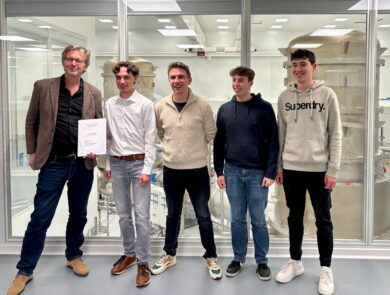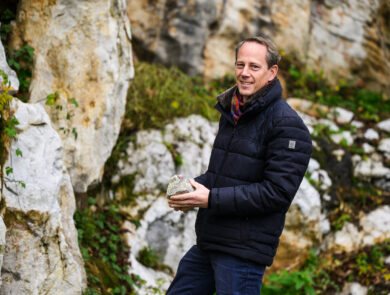Frontier science as an artistic inspiration
Artist Jonathan Wanders from Eijsden-Margraten (NL) is fascinated by the Einstein Telescope. In addition to its scientific and economic impact, the new observatory also inspires artistic ambitions.
Where does this fascination with the Einstein Telescope come from?
‘I have always been hugely fascinated by the unknown and the unlimited possibilities offered by space. A fascination I inherited from my father. People on the moon, journeys to Mars, the predictions of Albert Einstein and Stephen Hawking, futuristic films and series like Star Trek and 2021: A Space Odyssey, it all captures my imagination. As an artist, you need that imagination in your work. The Einstein Telescope is another such example.’
Why?
‘People always want to push boundaries. There are so many groundbreaking aspects to the Einstein Telescope. Scientifically, gravitational waves are being measured for the first time from a location deep underground. In the region, we set aside national borders to make this possible together in the Euregio Meuse-Rhine. We are a region of towns and villages, where we have plenty of similarities in cultural areas, for example, but where, on the other hand, you still experience borders. Those boundaries between science and the environment blur in a project like the Einstein Telescope. In short, this is all so fascinating and offers so many opportunities. This brings us together. We must do everything we can to build that telescope here.’
‘The boundaries between science and the environment blur in a project like the Einstein Telescope.’
Jonathan Wanders

Do you see a role for yourself?
‘Of course I am open to using my imagination, whether on my own initiative or perhaps on commission. Time will tell. I continue to follow everything closely. After all, as an artist, you always ask yourself how you could ever represent a story that is still abstract.’
So what specifically should we think of?
‘I then think of an iconic landscape project, because the landscape plays an important role. And I don’t just mean above ground, but also underground and even extraterrestrial. I like to create new, dynamic landscapes through surprising and layered interventions in public space, where interaction and context are also important. In this, I can express my love and fascination for nature and the landscape. Call it ‘landscape poetry’. I start from respect for the landscape. With the Einstein Telescope, you have to dare to show that there is something interesting and important happening underground that you can be proud of as a region. Something that also benefits you. Make a statement. You can radiate that pride above ground with a symbol or icon of this Euregio, as a symbol of connection and promise for the future for new generations.’
One peek behind the curtain?
‘I really don’t know yet. But when you consider that the Einstein Telescope will soon be measuring gravitational waves, the landscape in this region is undulating and very close to the ripples on the Meuse, you mention the word ‘waves’ three times. That is already an inspiring starting point.’


